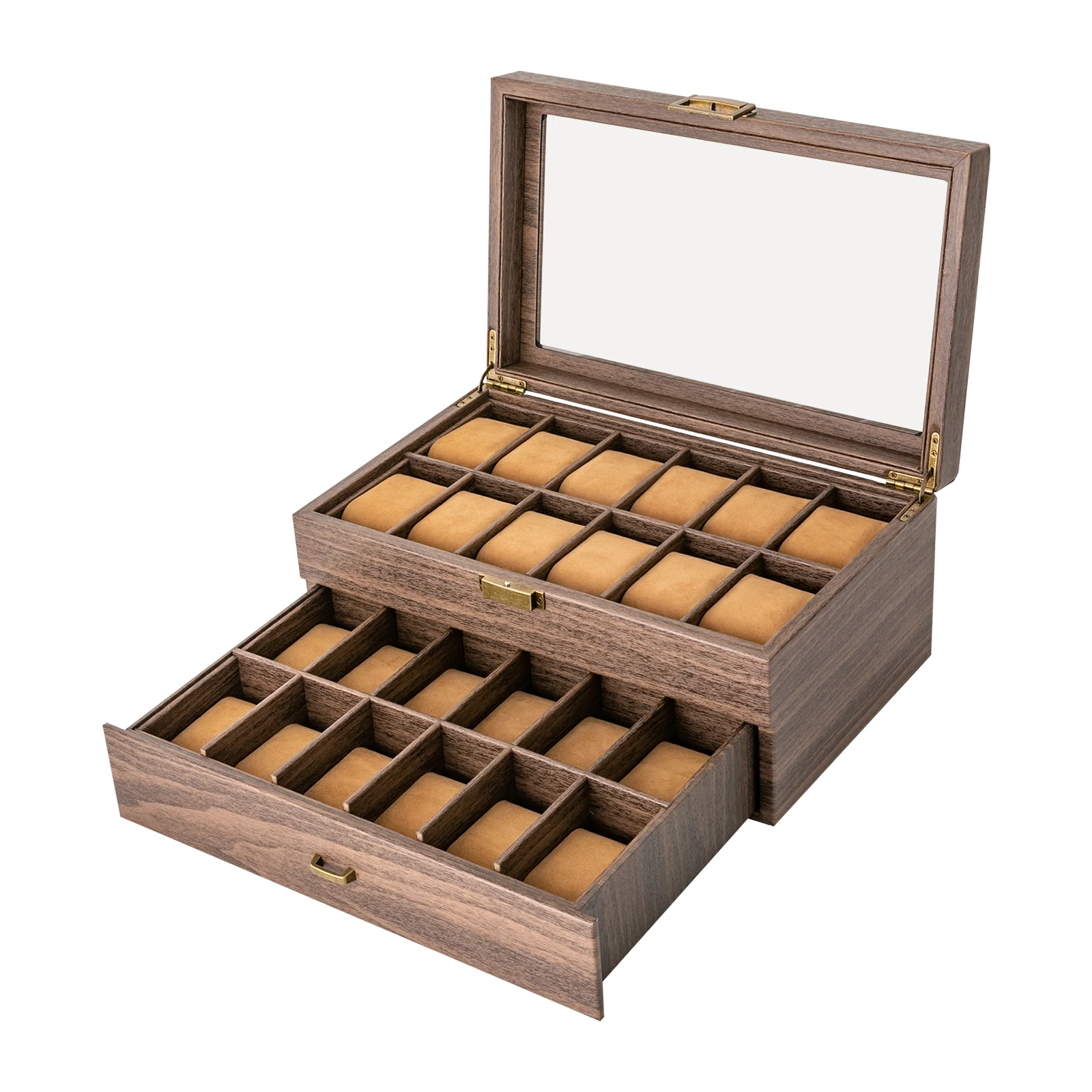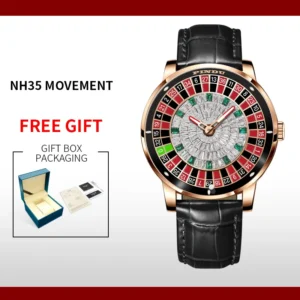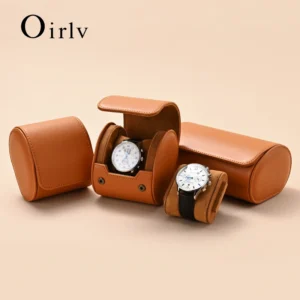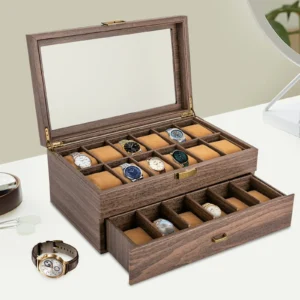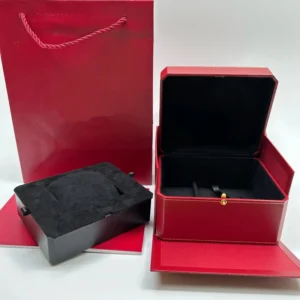Understanding Your Watch Collection Storage Requirements
Proper watch storage isn’t just about finding a place to keep your timepieces—it’s about protecting your investment, maintaining functionality, and showcasing your collection in a way that brings you joy. Whether you have a modest collection of three watches or an extensive array of timepieces, thoughtful storage planning makes all the difference.
The type of watches you own significantly impacts your storage needs. Automatic watches benefit from movement to keep them running, while quartz watches require different considerations related to battery life. Manual wind watches need regular attention to maintain their timekeeping ability, and modern smartwatches often have specific charging requirements to keep them functional.
When planning your storage solution, consider both your current collection size and future growth. A storage solution that perfectly fits five watches might quickly become inadequate as your collection expands to ten or fifteen pieces. Planning for growth saves you from repeatedly investing in new storage solutions as your collection evolves.
The monetary and sentimental value of your collection should directly influence your storage choices. High-value pieces often warrant additional security measures and environmental controls to maintain their condition and value. Even modestly priced watches with deep personal significance deserve protection that preserves their meaning and functionality.
Several lifestyle factors also play crucial roles in determining the ideal storage solution:
- Display preferences (whether you prefer to showcase your collection or keep it discreetly stored)
- Travel frequency (requiring portable storage options)
- Wearing patterns (affecting rotation systems and accessibility needs)
- Space constraints in your living environment
- Aesthetic preferences that complement your home decor
Effectively organizing watch collection strategies must account for these various watch types and their specific needs. Some collectors prefer sorting by brand, while others organize by functionality or frequency of wear.
As your collection grows, you’ll likely need multiple watch organizers and accessories to accommodate different watches and situations. A comprehensive storage system might include everyday access storage for frequently worn pieces, secure storage for valuable items, and specialized solutions for watches with unique requirements.
Environmental Controls for Optimal Watch Preservation
Creating the ideal environment for your watches significantly extends their lifespan and preserves their value. Understanding and controlling these environmental factors is essential for any serious collector.
Temperature Control
Watches perform best when stored between 65-75°F (18-24°C). Extreme temperatures can damage your timepieces in several ways:
- High temperatures may cause lubricants to thin or degrade
- Low temperatures can affect movement accuracy and potentially cause condensation
- Fluctuating temperatures stress materials through expansion and contraction
Avoid storing watches near heating vents, in direct sunlight, or in uninsulated areas like garages or attics where temperatures fluctuate dramatically.
Humidity Management
Maintaining relative humidity between 40-60% provides the optimal environment for watch storage. Too much humidity can lead to:
- Corrosion of metal components
- Mold growth on leather straps
- Water condensation inside watch cases
Conversely, excessively dry conditions may cause leather straps to crack and become brittle. Consider using silica gel packets in your watch storage or investing in a storage solution with built-in humidity control for valuable collections.
Light Exposure
Prolonged exposure to sunlight and artificial light can fade watch dials, deteriorate straps, and potentially damage sensitive components. UV light is particularly harmful, causing colors to fade and materials to break down over time. Storage solutions with solid lids or UV-protected glass provide essential protection from these damaging effects.
Dust and Debris Protection
Even microscopic dust particles can infiltrate watch movements and cause accelerated wear or malfunction. Closed storage systems create a protective barrier against environmental contaminants that could otherwise damage your timepieces over time.
Magnetic Field Prevention
Modern life surrounds us with magnetic fields from electronics, which can severely affect mechanical watch accuracy. Anti-magnetic storage solutions or keeping watches away from electronics helps maintain proper timekeeping. Some high-end watches feature anti-magnetic components, but most vintage and many modern watches remain vulnerable.
Air Circulation
While protection from dust is important, some air circulation prevents moisture buildup that can lead to corrosion or mold. The ideal storage solution balances protection with minimal airflow to maintain optimal conditions.
For long-term watch storage protection, many collectors use monitoring tools like small hygrometers and thermometers placed within their storage containers to track environmental conditions. This proactive approach allows for adjustments before conditions become harmful to your collection.
Watch Boxes: Types, Materials, and Selection Criteria
Watch boxes serve as the foundation of most collection storage systems, offering protection while often allowing for display. The materials, design, and features you choose significantly impact both the safety of your watches and your enjoyment of the collection.
Material Considerations
Different materials offer varying benefits and aesthetic qualities:
Wood: Traditional and elegant, wooden watch boxes provide good insulation against temperature fluctuations. Cedar naturally repels insects but may have strong aromas that transfer to watch straps, while walnut and cherry offer rich appearance with minimal scent. When comparing different watch box materials, wood consistently ranks high for its combination of protection and presentation.
Leather: Offers a luxurious feel with excellent scratch protection for watches. Genuine leather provides durability but requires occasional conditioning to prevent drying out, while synthetic leather offers easier maintenance.
Carbon Fiber: Modern and lightweight with excellent strength-to-weight ratio. These boxes typically command premium prices but offer distinctive contemporary styling.
Interior Lining Options
The interior material directly contacts your watches, making it crucial for protection:
- Velvet: Soft and traditional with excellent scratch prevention
- Suede: Slightly more texture than velvet but equally protective
- Microfiber: Modern option that resists dust accumulation and static electricity
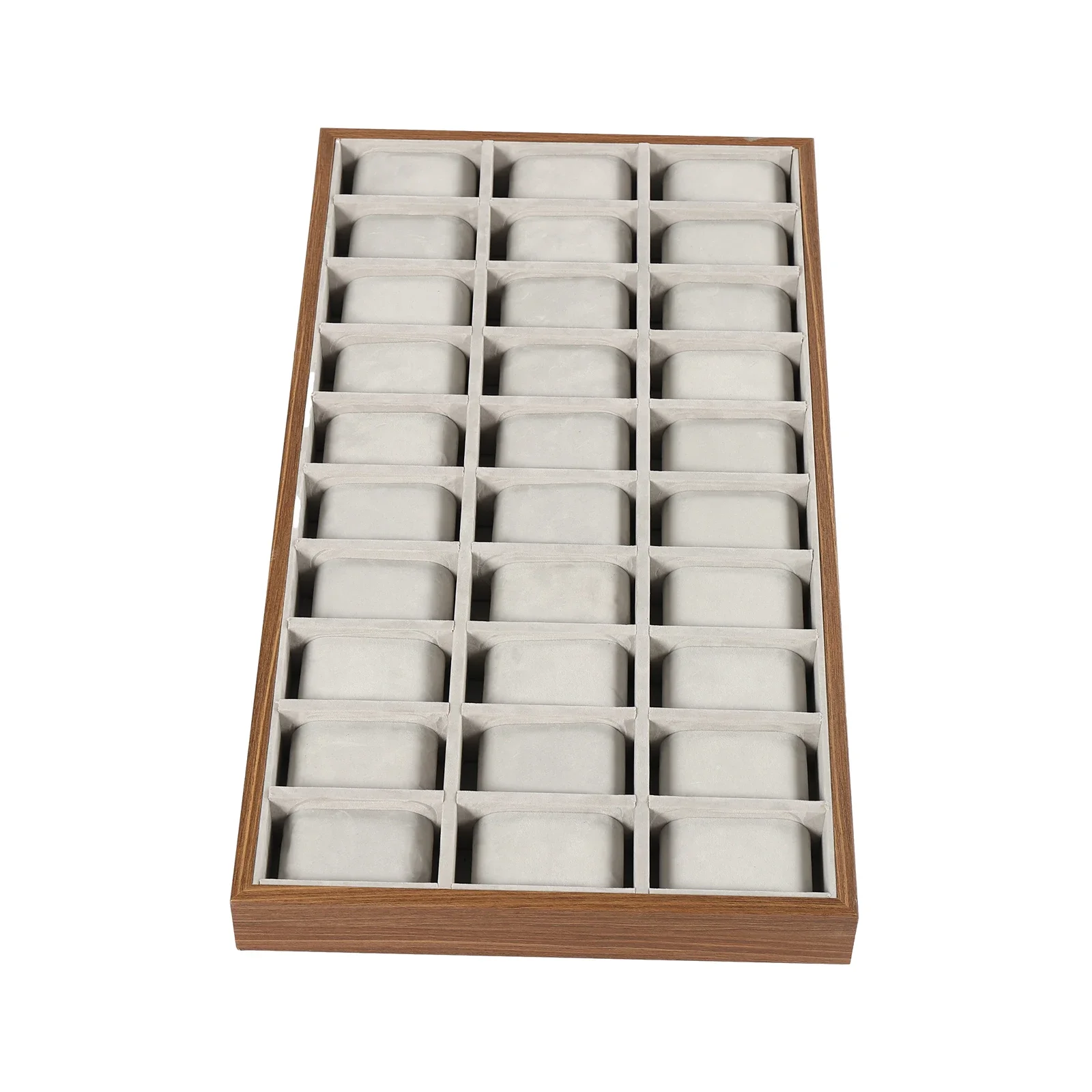
Capacity and Size Considerations
Matching box capacity to collection needs requires forethought:
- Small collections (2-5 watches): Compact boxes ideal for bedside or drawer placement
- Medium collections (6-12 watches): 12-watch box solutions balance capacity with manageable size
- Large collections (12+ watches): Consider multiple specialized boxes or larger display cases
Watch slot size matters significantly—standard slots accommodate watches with cases up to 44mm, but larger sport watches may require oversized compartments. Measure your largest watches before selecting a storage solution.
Security Features
Protection extends beyond environmental factors to include security considerations:
- Lock and key mechanisms deter casual access
- Hidden compartments for storing documentation or small valuables
- Weight and stability to prevent accidental tipping
Display Options
Your preferred viewing and access style influences the ideal box configuration:
- Glass-top boxes showcase collections while providing dust protection
- Solid-top boxes offer maximum protection from light exposure
- Drawer-style boxes combine display potential with protective storage
Wooden watch boxes remain among the most popular choices for collectors due to their classic appearance and protective qualities. For special collections, luxury watch boxes featuring premium materials and craftsmanship provide both exceptional protection and presentation worthy of fine timepieces.
Watch Winders: Function, Selection, and Optimization
Watch winders serve a crucial function for automatic watch collectors, maintaining proper operation between wearings while preventing the need for manual resetting. Understanding their operation and selecting the right model requires careful consideration of several technical factors.
Purpose and Function
Automatic watches harness motion to wind their mainsprings through an internal rotor mechanism. Without regular wear, these watches eventually stop running—typically within 38-72 hours, depending on their power reserve. Watch winders simulate wrist motion, keeping unworn watches operational by maintaining power reserve through gentle rotation cycles.
Beyond convenience, proper winding offers several benefits:
- Keeps lubricants distributed throughout the movement
- Maintains accuracy between wearings
- Reduces wear from frequent manual setting
- Preserves date and other complications that can be tedious to reset
Key Technical Specifications
The most critical winder specification is the Turns Per Day (TPD) setting, which determines how many rotations the watch experiences in 24 hours:
- Most automatic watches require 650-800 TPD
- Some high-end or specialized movements need specific rotation counts
- Adjustable TPD settings accommodate different watch brands and models
Directional settings also matter significantly:
- Clockwise rotation (for watches that wind in one direction)
- Counterclockwise rotation (for alternate winding systems)
- Bi-directional rotation (most versatile, works with most watches)
Understanding watch winder motor specifications helps ensure you select a quality unit that will operate quietly and reliably for years.
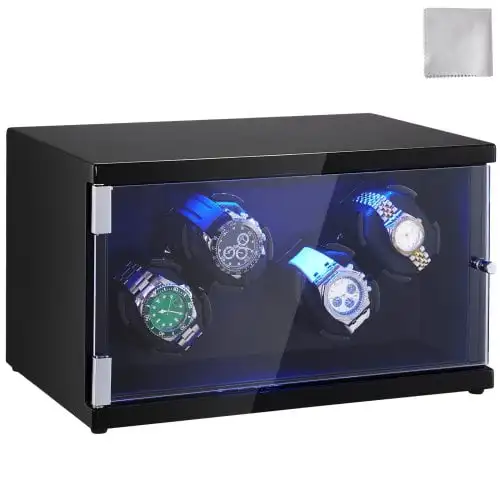
Single vs. Multi-Watch Considerations
Your collection size directly influences winder selection:
- Single winders: Ideal for one special timepiece or rotating different watches
- Double winders: Perfect for couples or collectors with two primary watches
- Multi-position winders (4-12+ watches): Efficient for larger collections
For growing collections, modular systems allow expansion by adding units over time rather than replacing existing winders.
Power Options and Advanced Features
Consider how and where you’ll use your winder when evaluating power sources:
- AC power: Most reliable for continuous operation
- Battery power: Offers placement flexibility and travel potential
- USB power: Modern convenience with backup potential
Advanced automatic watch winder features might include:
- Programmable rotation schedules
- Touch controls or remote operation
- LED illumination for visibility and display enhancement
- App connectivity for customized settings
Proper Usage Guidelines
To maximize winder benefits while minimizing potential issues:
- Match TPD settings to specific watch requirements
- Use rest periods in winding cycles to prevent overwinding
- Confirm proper watch fit in cushions/holders
- Position watches to maintain optimal balance
Well-chosen watch winders extend the longevity of automatic watches while providing the convenience of always-ready timepieces. Investing in quality mechanisms pays dividends through reliable operation and proper care of your valuable timepieces.
Travel Watch Cases and Rolls: Protection on the Go
For collectors who travel frequently, specialized portable solutions protect timepieces while away from home. These travel options balance protection with portability, ensuring watches remain safe during transit without consuming excessive luggage space.
Types of Travel Watch Storage
Several distinct styles accommodate different travel needs and preferences:
Zip Cases: Hard-sided protective cases with secure zippers offer maximum protection against impacts. These cases typically feature cushioned interiors with fixed or adjustable dividers.
Watch Rolls: Fabric or leather rolls secure watches individually in pockets or slots, then roll closed and fasten with ties or snaps. These provide good protection while minimizing bulk.
Travel Pouches: Soft, padded pouches designed for 1-2 watches offer the most compact solution for minimal travel needs.
Travel Boxes: Rigid boxes with secure closures and protective interiors provide home-like protection while traveling, though at greater size and weight.
When comparing watch boxes versus watch rolls, the primary considerations include space efficiency, level of protection needed, and number of watches being transported.
Material and Protection Considerations
Exterior materials significantly impact durability and protection:
- Ballistic nylon offers excellent tear resistance and water repellency
- Leather provides classic appearance with good protection against scratches
- Carbon fiber and aluminum cases deliver maximum impact protection at higher weight
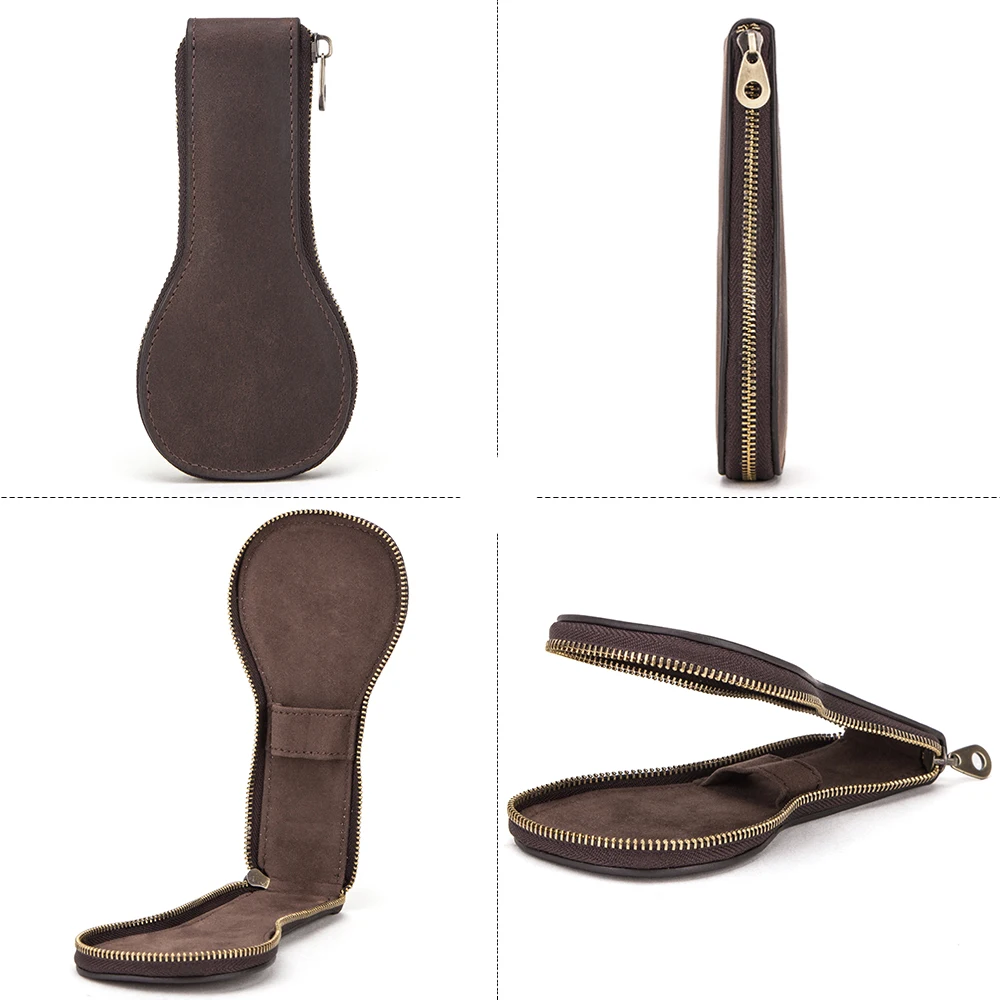
Interior materials cushion watches against movement and vibration:
- Memory foam adapts to watch shapes for custom-like protection
- Microsuede prevents scratching crystal and case surfaces
- Rigid dividers prevent watches from contacting each other
Capacity Options
Travel solutions range from single-watch carriers to cases accommodating entire collections:
- Single watch options: Ideal for business travel with one timepiece
- 2-4 watch cases: Perfect for weekend trips or rotating selections
- 6-8+ watch cases: Suitable for extended travel or collectors who need multiple options
Many watch travel cases include additional storage for accessories like spring bars, tools, or extra straps, maximizing utility for the traveling collector.
Travel Security Considerations
For air travel and security situations:
- TSA-friendly designs allow inspection without removing watches
- Locking mechanisms deter opportunistic theft
- Non-descript exteriors avoid drawing attention to valuable contents
Water resistance becomes particularly important during travel when exposure to weather or spills is more likely. Some premium watch roll travel cases offer waterproof exteriors for maximum protection in unpredictable conditions.
The ideal travel solution balances protection appropriate to your collection’s value with practical considerations of weight and space. For most travelers, a quality case accommodating 2-4 watches represents the sweet spot between versatility and convenience.
Watch Safes and Security Solutions
For collectors with valuable timepieces, standard storage often proves insufficient for true peace of mind. Dedicated security solutions offer protection against theft, damage, and environmental hazards while still allowing proper watch care.
Types of Watch Security Solutions
Watch security ranges from basic to comprehensive:
Standard Home Safes: General-purpose safes can store watches alongside other valuables, though they rarely include watch-specific organization.
Watch-Specific Safes: Purpose-built safes featuring watch winders, display windows, and specialized storage compartments combine security with collector-friendly features.
Luxury Watch Cabinets: High-end furniture pieces with concealed safe compartments balance aesthetic appeal with security.
In-Wall and Hidden Safes: Concealed installations provide additional theft protection through discreet placement.
Security Ratings Explained
Understanding safe ratings helps match protection to collection value:
UL Ratings: Underwriters Laboratories rates safes on burglar resistance and fire protection. TL-15 or TL-30 ratings indicate testing against tool attacks for 15 or 30 minutes respectively.
Fire Ratings: Measured in minutes of protection at specific temperatures (typically 1-2 hours at 1700°F). Important for preserving documentation alongside watches.
Cash Ratings: Insurance-recognized values for maximum recommended cash storage correlate roughly with appropriate watch values for storage.
Access Methods
Modern safes offer various access systems:
- Key locks provide reliable access without power requirements
- Combination dials offer power-free security with no electronic vulnerabilities
- Electronic keypads provide quick access with customizable codes
- Biometric systems offer convenience through fingerprint or retinal scanning
- Dual-authentication systems combine multiple methods for maximum security
Environmental Controls in Safes
Advanced watch safes often incorporate features from premium watch storage:
- Integrated humidity control systems
- Built-in watch winders for automatic watches
- LED lighting for visibility and display
- Specialized watch holders and organization systems
Creating a comprehensive luxury watch storage setup often involves integrating these security solutions with proper display and organization systems.
Placement Considerations
Safe placement affects both security and convenience:
- Floor mounting provides maximum theft resistance
- Concealment reduces theft targeting
- Accessibility impacts daily use and enjoyment
- Climate-controlled locations prevent environmental damage
- Consider proximity to water sources or fire hazards
For collections exceeding insurance home coverage limits, bank safety deposit boxes provide supplemental security for rarely worn pieces, though at the cost of regular access and environmental control.
Display Cases and Showcasing Your Collection
For many enthusiasts, the joy of collecting watches extends beyond wearing them to appreciating their beauty and craftsmanship even when not on the wrist. Display cases transform watch storage from purely functional protection into an aesthetic element enhancing your living space.
Types of Display Solutions
Watch displays come in several formats to match different spaces and collection sizes:
Wall-mounted displays: Utilize vertical space efficiently while making a dramatic presentation. These cases typically feature glass fronts and secure mounting systems.
Tabletop display cases: Free-standing units for desks, dressers, or shelves provide visibility while protecting from dust and casual handling.
Cabinet-style displays: Larger furniture pieces combine storage drawers with display areas, offering comprehensive collection management.
Watch towers: Vertical rotating displays maximize visibility while minimizing footprint, ideal for smaller spaces.
Creating an impressive display for watches in your home involves balancing visibility with protection while complementing your interior design.
Glass and Visibility Considerations
Not all display glass offers equal protection or visibility:
- Standard glass provides basic clarity but may create glare and offers minimal UV protection
- Non-reflective glass reduces glare for better viewing angles
- Museum-quality glass offers UV protection to prevent dial fading
- Tempered or security glass provides improved break resistance
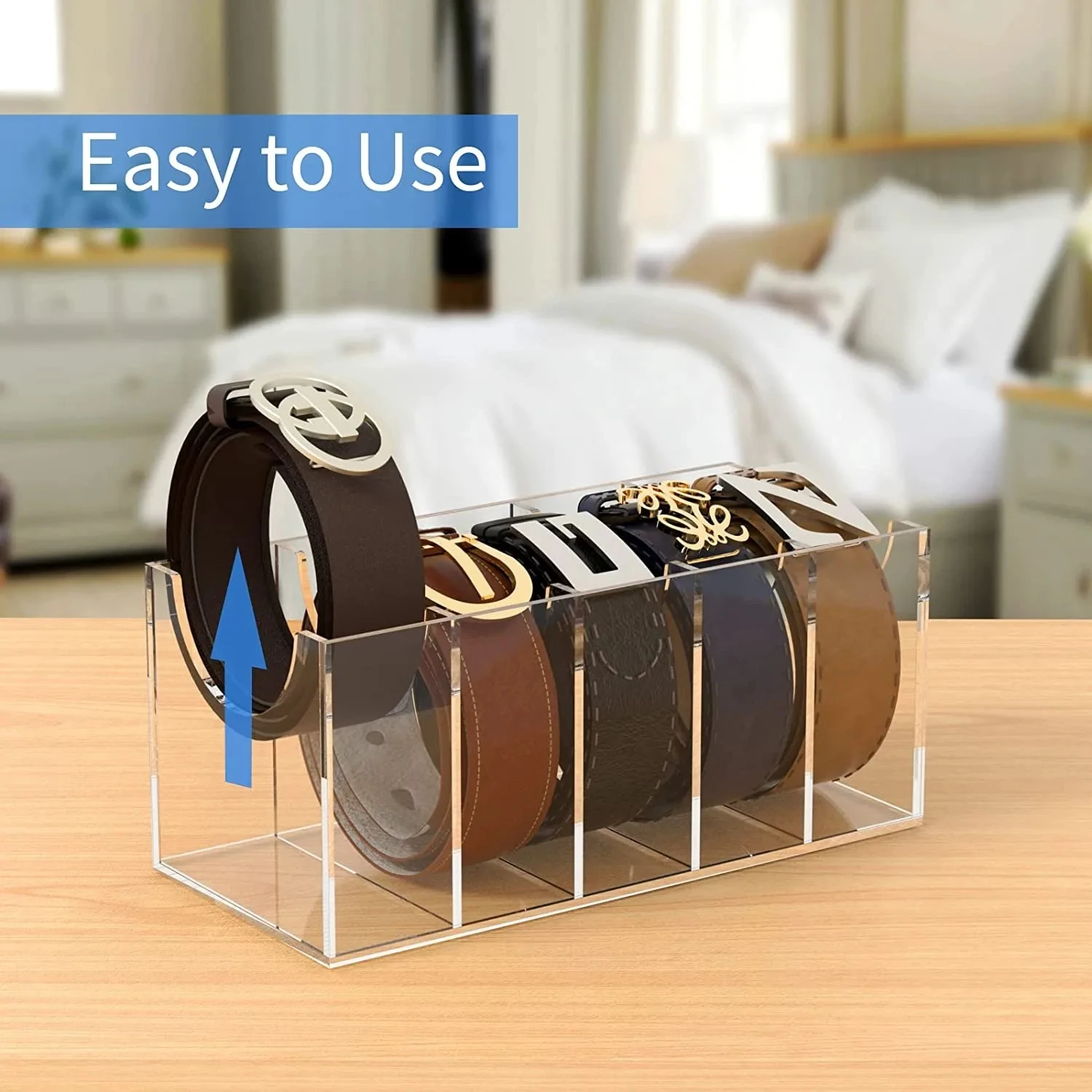
Lighting Options
Proper illumination dramatically enhances watch presentation:
- LED lighting provides even, cool illumination that won’t damage watches
- Adjustable brightness accommodates different viewing conditions
- Directional lighting highlights specific watches or collection features
- Natural lighting placement considerations to prevent UV exposure
Balancing Access and Security
The ideal watch display case balances visibility with protection:
- Lockable doors prevent unauthorized handling while allowing viewing
- Hinged or sliding access points enable easy retrieval
- Secure mounting prevents entire case removal in wall-mounted displays
- Key or combination locks deter casual access
Environmental Controls for Displayed Watches
Watches on display face additional environmental challenges:
- UV filtering on glass prevents fading and degradation
- Proper sealing prevents dust infiltration
- Some high-end display cases include humidity control systems
- Consider room placement away from windows, heating vents, and humidity sources
Rotating displayed watches periodically ensures even exposure and wear while allowing you to enjoy different pieces in your viewing area.
Watch Accessories, Watch Holder
$94.51 Select options This product has multiple variants. The options may be chosen on the product pageLuxury Watch Boxes, Men's Watch Boxes, Single Watch Box
Price range: $903.35 through $980.97 Select options This product has multiple variants. The options may be chosen on the product pageSingle Watch Travel Case, Watch and Jewelry Box, Watch Roll Travel Case
Price range: $93.44 through $140.65 Select options This product has multiple variants. The options may be chosen on the product pageMen's Watch Organizer, Watch Display Case, Watch Organizer
Price range: $112.68 through $169.45 Select options This product has multiple variants. The options may be chosen on the product pageAutomatic Watch Winder, Luxury Watch Winder, Single Watch Box
$307.39 Select options This product has multiple variants. The options may be chosen on the product pageLuxury Watch Boxes, Luxury Watch Travel Case
Price range: $200.33 through $224.57 Select options This product has multiple variants. The options may be chosen on the product page
Custom and Space-Saving Storage Solutions
Limited space doesn’t mean limiting your collection. Creative storage solutions allow collectors to maximize available area while maintaining proper watch care. Whether through specialized products or customized approaches, these solutions help collections thrive even in constrained environments.
Built-In Storage Options
Integrating watch storage into existing furniture or spaces offers seamless organization:
- Drawer inserts convert standard bedroom furniture into watch storage
- Custom closet sections with specialized watch compartments
- Hollowed book or wall-mounted shadow boxes for discreet storage
- Under-bed sliding drawers for flat, accessible storage
These approaches work particularly well in watch storage solutions for small spaces, where maximizing every available inch matters.
Vertical Storage Strategies
When floor or surface space is limited, vertical solutions capitalize on wall space:
- Wall-mounted watch cases with fold-down fronts
- Vertical rotating towers with minimal footprint
- Hanging watch rolls or pouches inside closets
- Pegboard or rail systems with customizable watch hooks
Multi-Function Furniture
Dual-purpose items serve watch collectors while fulfilling other needs:
- Coffee tables with display compartments beneath glass tops
- Nightstands with dedicated watch drawers
- Bookshelf units with integrated watch displays
- Entryway furniture with watch drop zones for daily rotation
Customizing Existing Products
Adapting standard products offers cost-effective personalization:
- Adding dividers to standard jewelry boxes
- Inserting watch pillows into existing drawers with watch drawer organizers
- Converting cigar humidors with custom watch cushions
- Repurposing tool chests with foam inserts shaped for watches
Space Utilization Strategies
Maximizing limited space requires thoughtful approaches:
- Categorizing watches between daily wear (accessible storage) and occasional wear (deeper storage)
- Rotating seasonal watches between primary and secondary storage
- Utilizing unused spaces like areas under stairs or window seats
- Combining storage types (boxes for display, rolls for space efficiency)
The key to successful space-saving storage lies in balancing protection, accessibility, and aesthetics while accommodating your collection’s specific needs. Even small apartments can house impressive collections when storage is thoughtfully planned and executed.
Collection Organization and Management Strategies
Beyond physical storage, effective collection management systems help you track, maintain, and enjoy your watches more fully. Implementing organizational strategies brings order to growing collections while ensuring each piece receives proper care and appreciation.
Categorization Approaches
Organizing watches logically helps with both storage decisions and wearing patterns:
- By Brand: Grouping watches from the same manufacturer, helpful for collectors focusing on specific brands
- By Type: Separating dress watches, sport watches, and casual pieces for easier selection
- By Frequency of Wear: Placing regularly worn watches in more accessible storage
- By Value: Storing high-value pieces in more secure locations
- By Movement Type: Separating automatic, manual, and quartz watches for appropriate maintenance
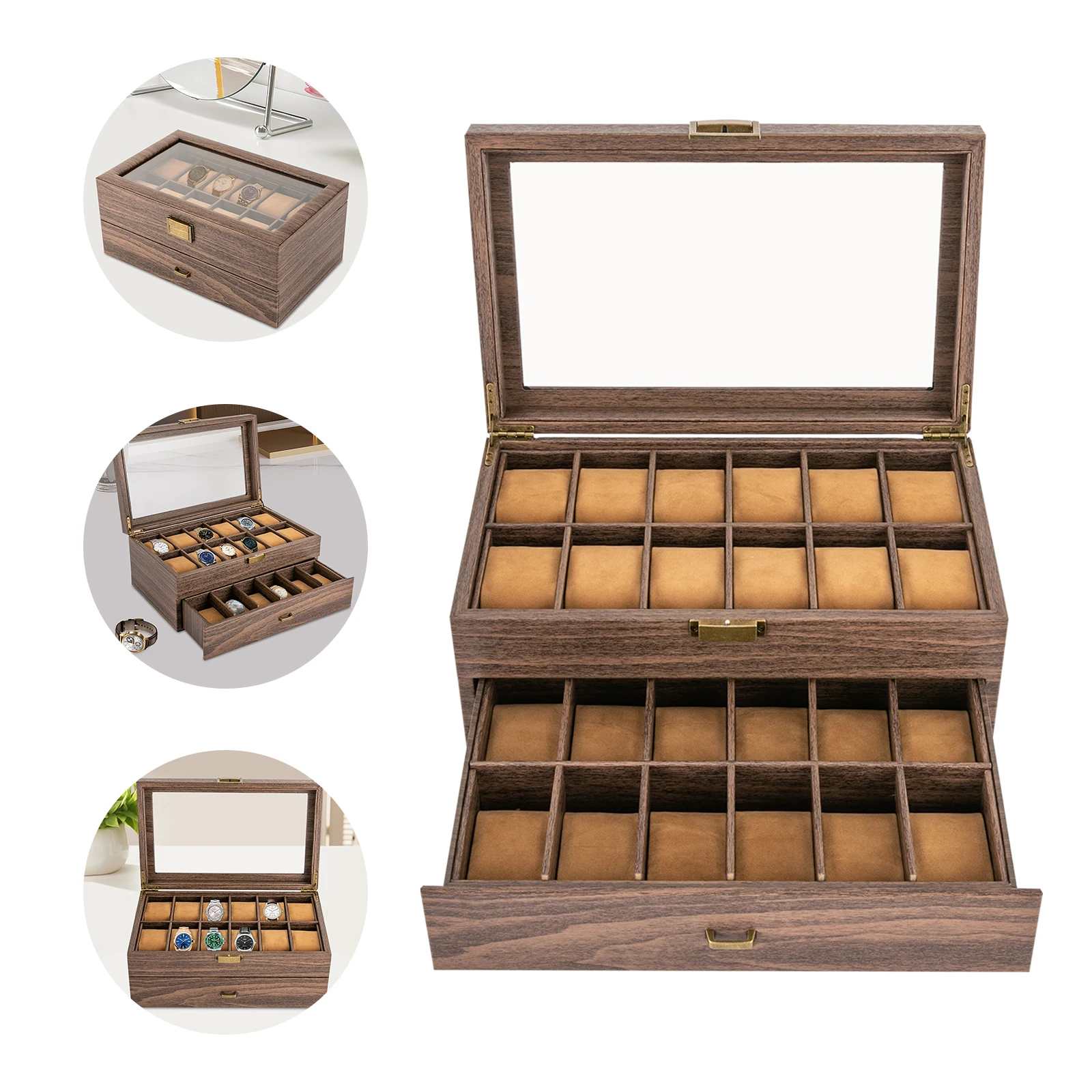
Rotation Systems
Structured rotation ensures all watches receive proper wear and attention:
- Weekly rotation systems for primary watches
- Seasonal rotation for watches with weather-appropriate styling
- Occasion-based rotation for special events and activities
- Maintenance-driven rotation to ensure automatic watches receive adequate motion
Inventory Management
Tracking your collection becomes increasingly important as it grows:
- Physical inventory lists with purchase information and service history
- Spreadsheet systems tracking specifications and maintenance schedules
- Photography archives documenting condition and details
- Watch-specific apps designed for collector inventory management
Implementing creative watch storage ideas for collectors often includes developing personalized organization systems that reflect your unique relationship with your collection.
Documentation Storage
Preserving important papers maintains value and service history:
- Warranty cards stored with original packaging
- Service records documenting maintenance history
- Purchase receipts and appraisals for insurance purposes
- Authentication certificates for limited editions or vintage pieces
Store these documents either alongside watches in specialized compartments or in a separate, organized filing system with clear references to the associated timepieces.
Digital Collection Tools
Modern technology offers powerful collection management capabilities:
- Collection management apps with specification databases
- Cloud photo storage with watch details and acquisition information
- Maintenance reminder systems for service intervals
- Value tracking platforms that monitor market trends for similar watches
Planning for Growth
Anticipating collection evolution helps avoid repeated storage reorganization:
- Selecting modular storage systems that can expand
- Leaving room in categories for additional acquisitions
- Periodically reassessing storage needs against collection growth
- Implementing “one in, one out” policies to maintain manageable collection size
Effective organization transforms a group of watches into a curated collection that brings maximum enjoyment while ensuring each piece receives appropriate care and attention.
Insurance and Valuation for Watch Collections
Protecting the financial investment in your watch collection extends beyond physical security to proper documentation and insurance coverage. Understanding valuation and insurance options safeguards against potential loss while providing peace of mind.
Types of Insurance Coverage
Several options exist for insuring timepiece collections:
- Homeowner’s/Renter’s Insurance Extensions: Basic coverage with specific valuable item riders
- Specialized Watch Insurance: Policies designed specifically for timepiece collections with appropriate terms
- Blanket Coverage: Protection for the entire collection under a single value limit
- Scheduled Coverage: Itemized protection for specific watches with individual documentation
Homeowner’s Insurance Limitations
Standard policies typically have significant restrictions:
- Low coverage limits for jewelry/watches (often $1,000-$2,500 total)
- High deductibles that may make smaller claims impractical
- Exclusions for certain loss scenarios like mysterious disappearance
- Potential coverage gaps for watches worn outside the home
Documentation Requirements
Proper documentation significantly improves claims experiences:
- Professional appraisals from certified watchmakers or appraisers
- High-resolution photographs showing condition and serial numbers
- Original purchase receipts and certificates of authenticity
- Service records demonstrating ongoing maintenance
- Detailed inventory lists with specifications and identifying features
Appraisal Considerations
Regular professional appraisals serve multiple purposes:
- Establishing current market value for insurance purposes
- Documenting condition at specific points in time
- Identifying any developing issues requiring attention
- Confirming authenticity of components following service
Experts recommend updating appraisals every 3-5 years or after significant market fluctuations, particularly for higher-value timepieces.
Photography Best Practices
Comprehensive documentation includes detailed photography:
- Front, back, and side images of each timepiece
- Close-ups of identifying features (serial numbers, unique markers)
- Photos of original boxes, papers, and accessories
- Images showing any distinguishing characteristics or damage
- Updated photos following any repairs or modifications
Insurance Policy Considerations
When evaluating insurance options, consider these factors:
- Coverage territory (worldwide vs. limited geographic areas)
- Agreed value vs. actual cash value settlement methods
- Coverage during transit and travel
- Repair vs. replacement provisions
- Deductible options and their impact on premiums
- Coverage for newly acquired pieces before formal notification
Some insurers offer specialized collection policies with features like inflation protection, coverage during service or repair, and preferred repair specialists with original parts guarantees.
Maintenance Routines for Stored Watches
Even when stored properly, watches require ongoing maintenance to preserve their condition and functionality. Establishing regular care routines prevents deterioration and ensures timepieces remain ready to wear when desired.
Preparation for Storage
Before placing watches in storage, proper preparation prevents many common issues:
- Clean cases and bracelets with a soft cloth to remove oils, dirt, and residue
- Ensure watches are fully wound (for manual watches) or at full power reserve (for automatics)
- Set watches to specific positions (crown up or down) based on movement recommendations
- Remove batteries from quartz watches during very long-term storage
- Apply appropriate conditioners to leather straps before extended storage
Movement-Specific Maintenance
Different watch types require tailored maintenance approaches:
Automatic Watches:
– Either use watch winders set to appropriate TPD or manually wind periodically
– If not using winders, rotate position every few months to distribute lubricants
– Consider full winding and brief operation every 3-6 months for unworn pieces
Manual Wind Watches:
– Avoid storing with mainspring fully wound for extended periods
– Wind partially every few months to circulate lubricants
– Release crown pressure after winding to reduce stem stress
Quartz Watches:
– Replace batteries proactively before leakage can occur
– For long-term storage, consider removing batteries entirely
– If features allow, use power-saving modes for smart or connected watches
Storage location can significantly impact maintenance needs. The specific watch storage requirements for bedrooms versus living rooms vary based on temperature, humidity, and light exposure differences between these spaces.
Inspection Routines
Regular monitoring prevents small issues from becoming significant problems:
- Monthly visual inspection for dust accumulation or environmental changes
- Quarterly functional checks including power reserve and accuracy testing
- Semi-annual detailed examination of gaskets, seals, and water resistance
- Annual review of rotation patterns and storage conditions
Vintage Watch Considerations
Older timepieces demand additional attention during storage:
- More sensitive to humidity fluctuations due to aged seals
- May contain materials now known to deteriorate (early synthetic crystals, etc.)
- Often benefit from more frequent, gentle winding
- May require specialized cushions or supports to accommodate fragile components
Condensation and Corrosion Monitoring
Watch storage areas should be regularly checked for signs of moisture problems:
- Inspect for condensation inside watch crystals
- Look for early signs of corrosion on case backs or movement components
- Check leather straps for mildew or mold indicators
- Monitor humidity indicators in storage containers
Establishing consistent maintenance routines preserves both the function and value of stored watches. These practices become increasingly important as collection value grows and includes pieces with historical or sentimental significance.
Expert Recommendations and Budget Considerations
Creating the ideal watch storage system requires balancing protection needs with practical budget constraints. Understanding where to invest and where to economize helps maximize both protection and value.
Budget Framework for Different Collection Values
Storage investment typically scales with collection value:
- Entry-level collections (under $5,000): Allocate 5-10% of collection value to storage
- Mid-range collections ($5,000-$20,000): Budget 3-7% for comprehensive storage solutions
- High-value collections ($20,000+): Invest 2-5% in premium protection systems
These percentages provide starting guidelines, though individual needs may vary based on collection size and specific requirements.
Investment Prioritization
Focus spending on these elements in order of importance:
- Basic protection (quality watch box with proper cushioning)
- Environmental controls (humidity and temperature management)
- Security features (locks, safes, insurance)
- Specialized storage (winders for automatics, travel cases)
- Display and aesthetic elements (presentation features)
For those seeking budget-friendly watch storage solutions, focusing on essential protection while minimizing costly aesthetic features often provides the best value.
Where Quality Matters Most
Certain components justify higher investment:
- Cushions and dividers that directly contact watches
- Closure mechanisms that seal out dust and humidity
- Lining materials that prevent scratching
- Hinges and hardware that maintain alignment over time
Economizing Without Compromising Protection
Save without sacrificing quality through these approaches:
- Choose simpler designs with quality materials over ornate options
- Consider modular systems that expand over time rather than oversized immediate purchases
- Prioritize function over brand names for basic storage components
- Look for multi-purpose options that serve multiple storage needs
Long-Term Value Considerations
Some premium features provide lasting value that justifies higher initial cost:
- Higher quality motors in watch winders typically offer longer service life
- Solid wood construction tends to outlast composite materials
- Full-grain leather typically ages better than bonded leather or synthetic options
- Quality hardware prevents alignment issues and closure problems over time
Scalability Planning
As collections grow, storage needs evolve:
- Begin with quality core pieces that accommodate current needs
- Choose systems from manufacturers offering compatible expansions
- Consider future space constraints when selecting initial storage style
- Plan upgrade paths that don’t require replacing earlier investments
Watchmakers and experienced collectors consistently recommend investing in quality for pieces that directly contact watches while being more economical with decorative or secondary features. This balanced approach ensures protection where it matters most while creating a storage system that grows alongside your collection.
Is A Watch Winder Necessary? Making The Right Choice
This common question lacks a universal answer, as the necessity of a watch winder depends on several factors specific to your collection and wearing habits.
Watch winders primarily serve automatic watches, which rely on motion to maintain power reserve. These devices offer several benefits:
- Keep watches running between wearings
- Maintain accuracy and correct time/date displays
- Distribute lubricants throughout movements
- Reduce the need for setting and adjusting
However, winders aren’t essential for all collectors. Consider these factors when deciding:
For collections with primarily quartz watches, winders provide no functional benefit. Similarly, manual wind watches don’t benefit from winders as they require intentional winding regardless.
Your wearing patterns significantly impact winder necessity. If you rotate through multiple automatic watches with complicated features (annual calendars, moon phases), winders save considerable setting time. Conversely, if you wear the same watch daily or have simple automatics, the convenience benefit diminishes.
Some collectors worry about excessive wear from continuous winding. While quality winders with proper settings won’t damage watches, they do keep movements continuously active. For very valuable or vintage pieces, some collectors prefer the natural rest periods that come with unworn storage, winding manually before wear.
The middle ground many experts recommend involves using winders selectively for complicated watches worn in rotation while manually winding less complex or less frequently worn pieces. This balanced approach provides convenience where most valuable while avoiding unnecessary mechanism wear.
How Frequently Should I Rotate My Watch Collection?
Establishing an effective rotation schedule keeps your entire collection in optimal condition while allowing you to enjoy all your timepieces. The ideal rotation frequency varies based on several factors.
For automatic watches, movement health benefits from being worn at least once every 2-4 weeks. This periodic motion helps distribute lubricants and prevents gaskets from drying in a single position. Extended static periods may lead to lubricant pooling or stiffness in mechanical components.
Manual wind watches benefit from similar rotation schedules, though the focus shifts to preventing gasket compression and maintaining even wear patterns rather than lubricant distribution.
Quartz watches require less frequent rotation, with monthly or even quarterly wear sufficient to identify any issues like battery depletion or moisture intrusion before they cause damage.
Seasonal considerations often influence natural rotation patterns. Watches with leather straps may rotate out during summer months when perspiration increases, while divers or sports watches may see more use during warm weather activities.
Many collectors implement systematic rotation approaches:
– Weekly rotation systems for primary watches
– Monthly rotation for secondary collection pieces
– Seasonal rotation for style-specific watches
– Event-based rotation for special occasion timepieces
Signs that a watch has remained static too long include stiffness in the crown, hesitation in automatic winding systems, or decreased power reserve duration. Addressing these early signs through regular rotation prevents more significant problems from developing.
Can Watches Be Safely Stored Long-Term Without Maintenance?
While watches can be stored for extended periods, completely maintenance-free storage isn’t realistic for mechanical timepieces. Even with perfect storage conditions, lubricants eventually migrate, gaskets compress, and components experience natural aging.
For successful long-term storage, preparation makes a significant difference:
- Have mechanical watches professionally serviced before extended storage
- Clean all exterior surfaces thoroughly to remove oils and residues
- Store at stable temperature and controlled humidity
- Position mechanical watches dial-up or crown-up to minimize pressure on components
- Remove batteries from quartz watches to prevent leakage
Automatic watches present special challenges during extended storage. Without motion, lubricants may settle unevenly. Some collectors fully wind automatics before storage, while others prefer partial winding to reduce mainspring tension. Both approaches have merits, though most watchmakers recommend at least quarterly winding to redistribute lubricants.
Quartz watches store more successfully long-term, requiring only battery removal to prevent leakage damage. Digital watches with capacitors may lose stored data during extended storage, requiring complete resetting when returned to service.
The longest maintenance-free period reasonable for mechanical watches ranges from 6-12 months, after which some intervention (winding, position adjustment) becomes advisable. Watches with complications like perpetual calendars typically require more frequent attention to maintain proper function.
While vintage watches have demonstrated surprising resilience after decades of neglect, intentional long-term storage should include periodic checks and minimal maintenance to preserve both functionality and value.
What Is The Best Storage Solution For Vintage Watches?
Vintage timepieces demand specialized storage considerations due to their age, irreplaceability, and often fragile components. The ideal storage approach balances preservation with gentle maintenance.
Vintage watches typically benefit from more stable environments than modern pieces:
- More restricted temperature range (68-72°F/20-22°C)
- Lower and more stable humidity (40-50%)
- Complete protection from UV exposure
- Minimal position changes to protect fragile pivots
Material vulnerabilities in vintage pieces require specific attention:
- Acrylic crystals scratch more easily than modern sapphire
- Aged luminous materials (particularly radium) may deteriorate if disturbed
- Vintage leather straps often become brittle with age and humidity fluctuations
- Case gaskets may have hardened, reducing water and dust resistance
Specialized storage products addressing these concerns include:
- Acid-free tissue for separating metal components
- Silica gel packets for humidity control
- Cushions specifically shaped to support case contours without stress
- UV-filtering display cases for visible storage
Many serious vintage collectors use separate storage containers for each piece, allowing customized environments while preventing cross-contamination of oils or materials. Documentation storage becomes particularly important for vintage pieces, where service history, provenance, and original components significantly impact value.
Handle vintage watches minimally, as even oils from fingerprints can accelerate deterioration of certain materials. When displaying or storing, avoid stacking or placing pressure on crystals, crowns, or pushers that may have become more fragile with age.
For irreplaceable or extremely valuable vintage pieces, some collectors maintain separate storage in bank safety deposit boxes with periodic maintenance visits, balancing security with proper care.

